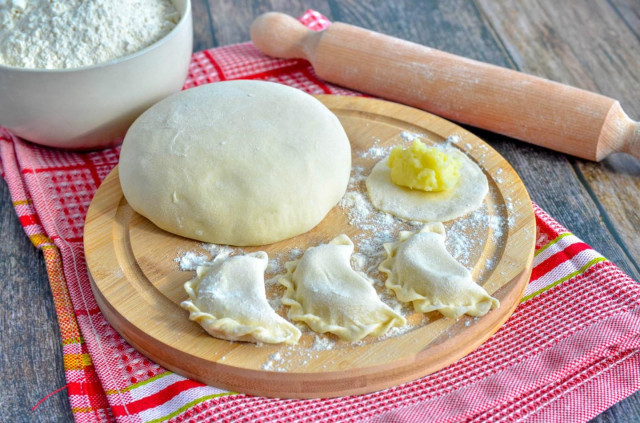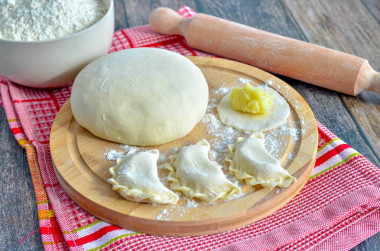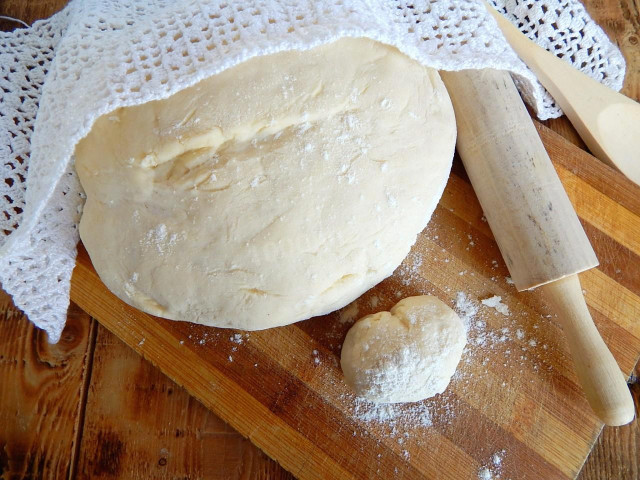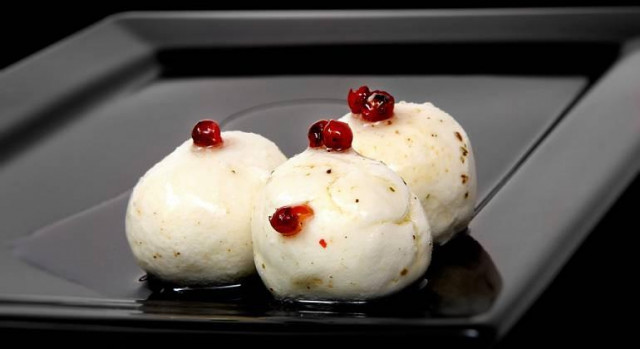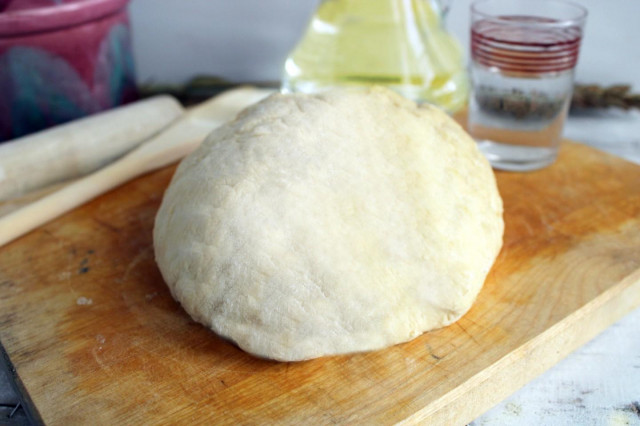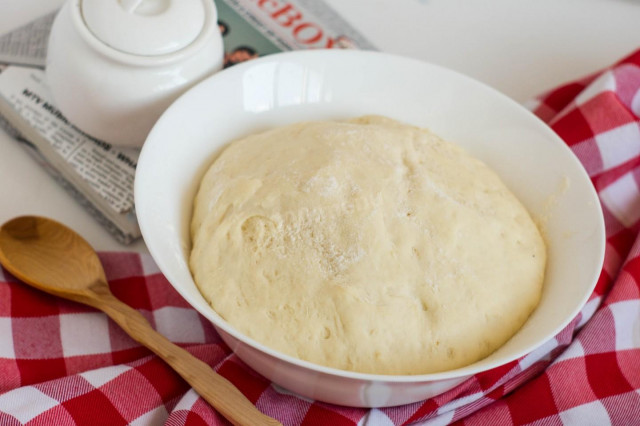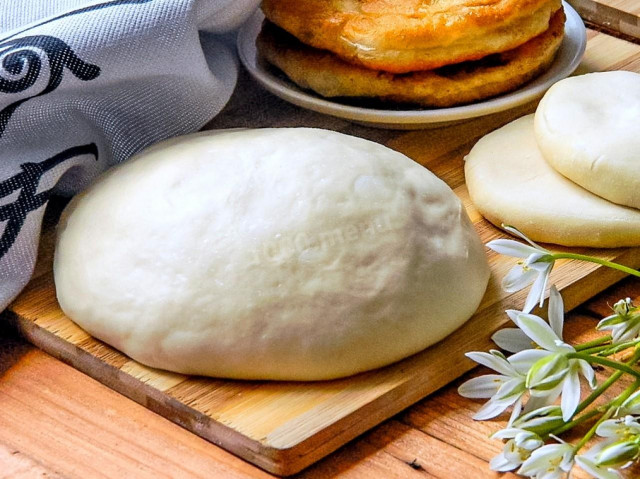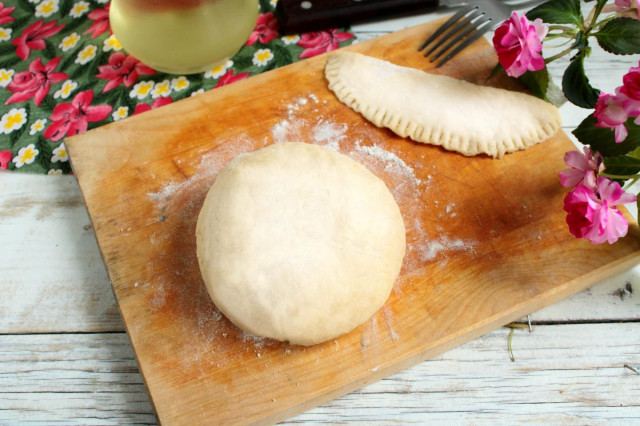Composition / ingredients
Step-by-step cooking
Step 1:
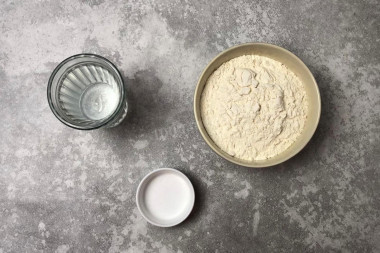
How to make lean dough for dumplings? Prepare the products. Take filtered or bottled water, the taste of future dumplings depends on its taste, do not neglect this. Flour can take more or less. It all depends on its quality and humidity. Plus, you will also need a small amount for further rolling and modeling dumplings.
Step 2:
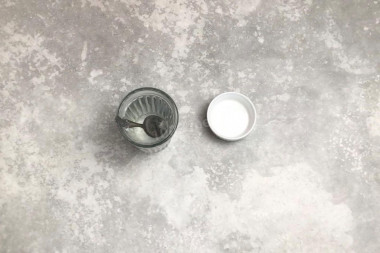
Heat the water slightly, it should become warm. Such water will develop gluten in the dough better and faster, which is especially important in the lean version, where there are no eggs that are responsible for elasticity. Put salt in the water, mix.
Step 3:
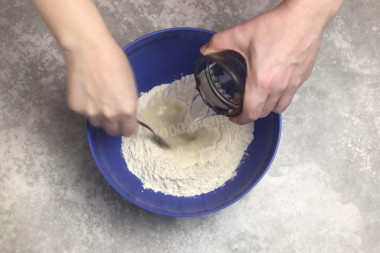
Sift flour into a large bowl. Do not add all the flour at once, take two glasses to begin with. Then you will add as needed. Make a recess in the middle. Gradually, with constant stirring, pour in the water.
Step 4:
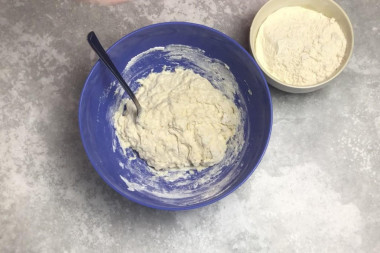
The dough will still be liquid, start gradually adding flour. At first it will be easy to knead with a fork, then it will be necessary to knead with your hands.
Step 5:
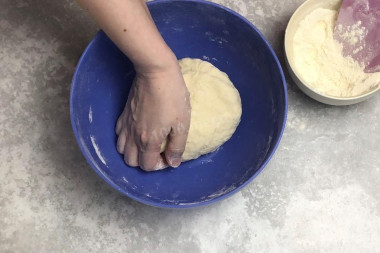
Knead the dough for about 10 minutes, until it becomes smooth and elastic, and practically stops sticking to your hands. It took me a little more than three cups of flour for this amount of products.
Step 6:
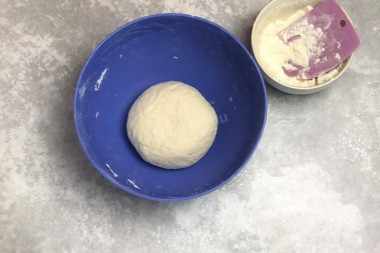
Assemble the dough into a ball, sprinkle it with flour on all sides. Cover the bowl with the dough with a towel and leave for 20-30 minutes to rest. During this time, gluten will develop well in it, and the dough will become very elastic. Alternatively, the dough can be put in a bag with subsequent storage in the refrigerator.
Step 7:
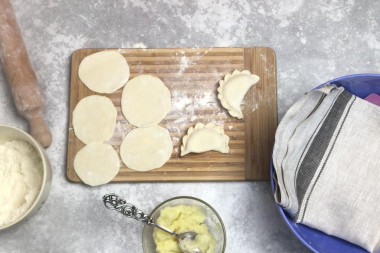
When further modeling dumplings, roll out the dough on a work surface sprinkled with flour. I prefer to make dumplings not by cutting out blanks from a large circle, but by rolling out individual circles from small pieces of dough.
I really enjoyed working with the lean test. I didn't even feel the difference compared to the usual one! Kneaded perfectly, rolled out well. When cooking, it did not spread, but at the same time it became very tender.
You can also add a couple of tablespoons of vegetable oil to the lean dough, then it will definitely be very plastic.
By the way, this dough can be used not only for dumplings, but also for dumplings, any other dishes for which the dough should not be baked, but boiled.
Be prepared for the fact that flour may need more or less than indicated in the recipe. Focus not on the amount of flour, but on the desired consistency of the dough. To avoid mistakes, read about flour and its properties!
For cooking, it is better to use filtered or bottled water that is neutral to taste. If you use tap water, keep in mind that it can give the dish an unpleasant characteristic taste.
Caloric content of the products possible in the composition of the dish
- Whole durum wheat flour fortified - 333 kcal/100g
- Whole durum wheat flour, universal - 364 kcal/100g
- Flour krupchatka - 348 kcal/100g
- Flour - 325 kcal/100g
- Salt - 0 kcal/100g
- Water - 0 kcal/100g

